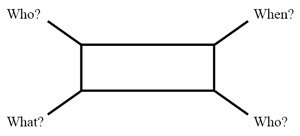In the ninth article in this series, Kay Bentley discusses and suggests ways of allowing students to demonstrate what they already know about a subject.
Activating prior knowledge is used in both language and subject teaching. It is an effective procedure as learners are given the opportunity to demonstrate what they already know and what they can do. It also has the purpose of contextualizing learning. In CLIL contexts, activating prior knowledge usually focuses on content knowledge rather than knowledge of language structures or functions. Of course, when learners communicate their subject knowledge, teachers may choose to listen for learners’ language skills too so they can note any difficulties.
What is different in many CLIL contexts is that while activating prior knowledge, learners tend to use some L1 particularly at the start of CLIL programmes. For some teachers, learners’ use of some L1 while activating prior knowledge is acceptable even at later stages, though this is more likely to be in the form of code switch between L1 and the CLIL language. Teachers can choose to translate all or some of the responses (see third entry in this series about code switching).
What subject teachers in CLIL programmes often ask is ‘How can we activate prior knowledge?’. Here are some examples:
- Use a concept map to brainstorm ideas either orally or in writing
- Write question words around a mind map so learners can respond to facts they know about an historical event e.g.

- Ask open-ended questions such as ‘What can you tell me about ________?’
- Give timed tasks such as ‘You have three minutes to talk about/write down as many words/facts as you can about …’
- Evoke memories and/or imagination e.g. 'Imagine ________ and tell me what you can see/hear/smell/touch'.
- Use images, sound or realia to find out what learners already know
Teachers should plan time for activating prior knowledge either at the start of a lesson or after consolidation of previous work and should decide in advance if this would be done as a whole class, pair or group work activity. It is helpful to make a list of ways to do this so learners have a variety of ways to communicate their knowledge.
In TKT: CLIL, activating prior knowledge is tested in Part 2 in tasks about lesson planning and classroom language.
For more information about the TKT: CLIL visit the Cambridge ESOL TKT:CLIL website.
TKT CLIL Language
- 1
- 2
- 3
- 4Currently reading
TKT: Activating prior knowledge
- 5
- 6
- 7
- 8
- 9
- 10
- 11
- 12
- 13






No comments yet